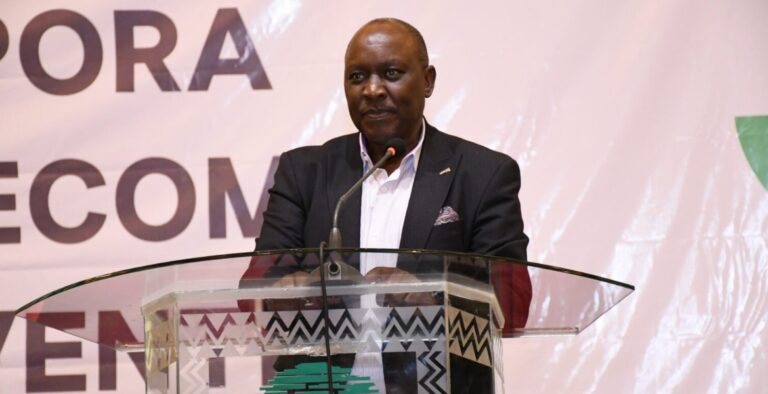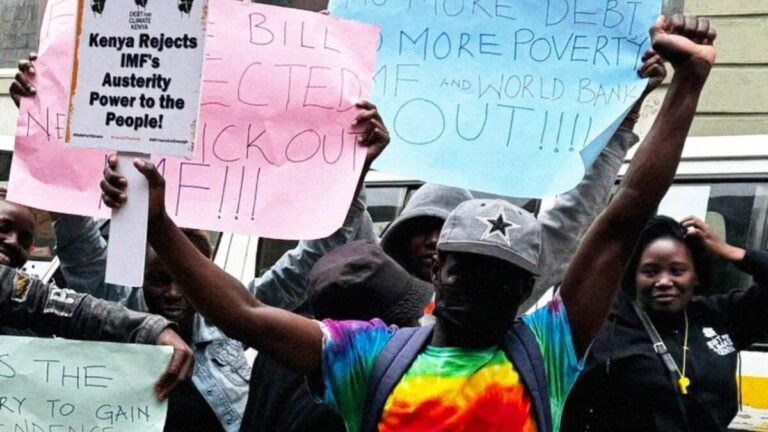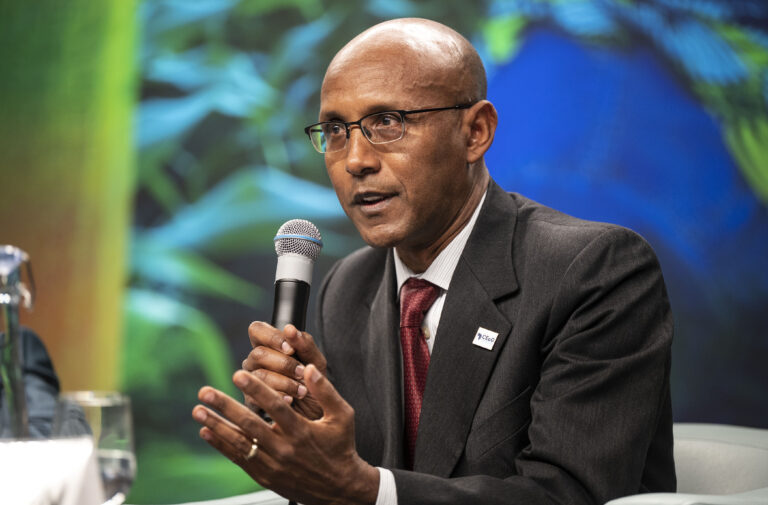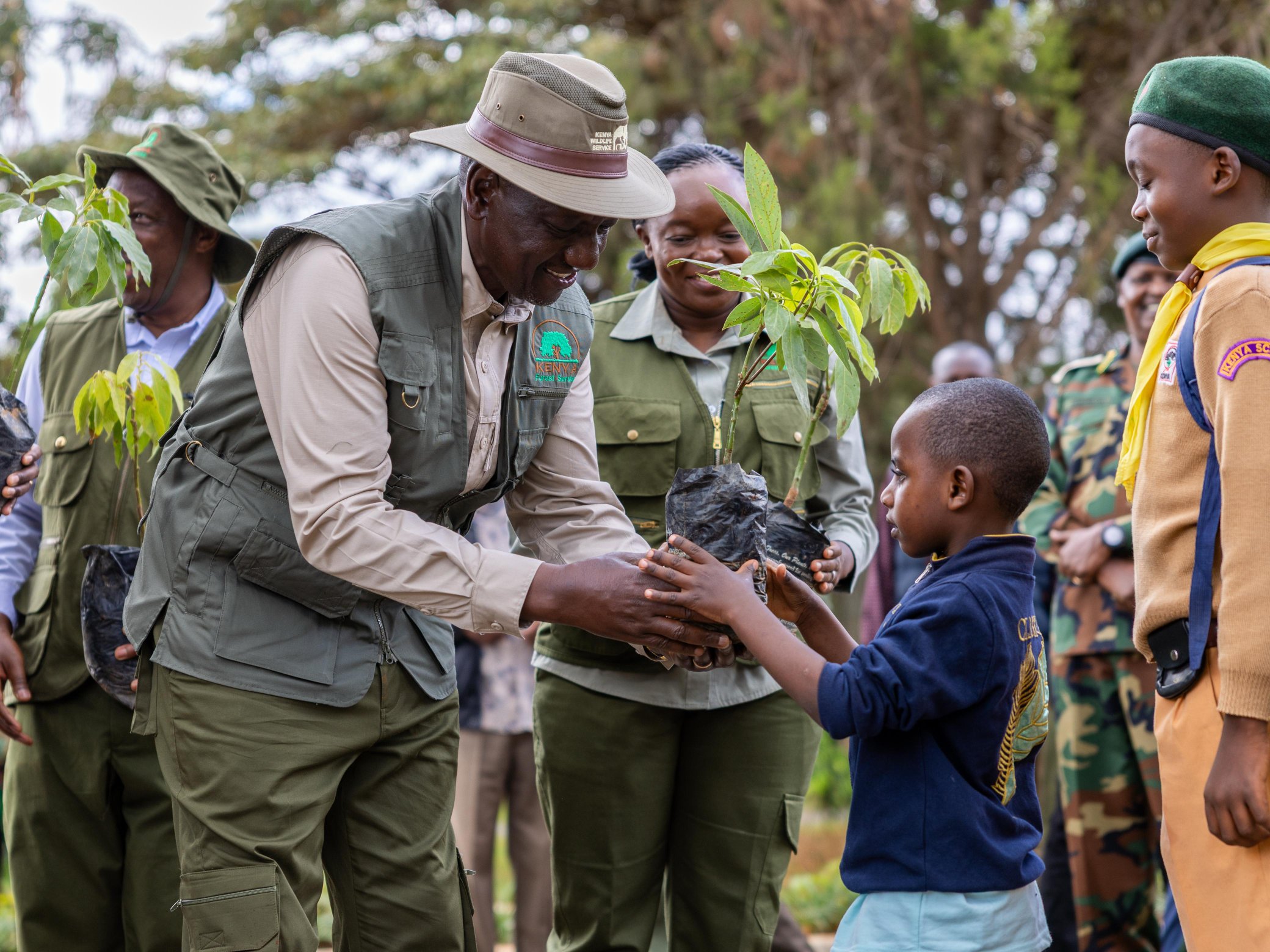
President William Ruto leads a tree-planting exercise at State House, Nairobi, during Mazingira Day celebrations. Photo/Courtesy
By Daisy Okiring
NAIROBI, Kenya- President William Ruto has unveiled an ambitious plan to establish 17 mega nurseries capable of producing 2 billion tree seedlings every year, a cornerstone of his administration’s goal to grow 15 billion trees by 2032.
Speaking at State House, Nairobi, during Mazingira Day celebrations, the President said 15,000 National Youth Service (NYS) recruits will partner with the Kenya Forest Service (KFS) to enhance seedling production in 300 nurseries nationwide. The initiative, he noted, is part of Kenya’s commitment to combating climate change through practical, community-based reforestation.
Climate and food security link
“Climate change is a global reality that must be addressed through tangible action such as tree growing, protecting water catchments, and restoring degraded ecosystems,” Ruto stated.
He emphasized the strong link between forest cover and food security, explaining that the nurseries will prioritize fruit trees to boost nutrition, create agro-processing opportunities, and open new export markets.
“The seedlings will include fruit trees to strengthen our food security and create wealth for our people while protecting water catchments,” Ruto posted on X.
Read More: Why irrigation is Kenya’s lifeline for climate resilience and growth
Schools and communities to lead
Under the plan, 35,000 primary schools across the country will each plant at least 2,000 fruit tree seedlings, contributing to a national total of over 100 million trees this year.
Ruto directed all public officials to return to their former primary schools to lead the tree-planting efforts. He said the campaign will use a whole-of-society approach, ensuring participation from schools, communities, and government departments alike.
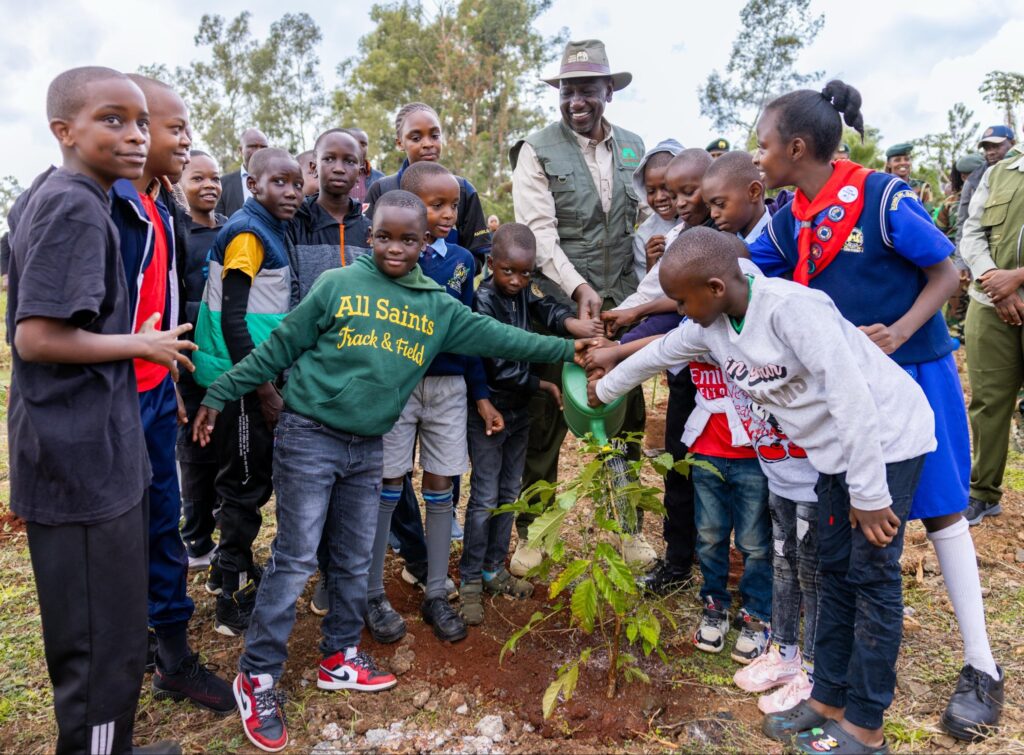
Sustaining the momentum
Chief Conservator of Forests Alex Lemakoko welcomed the directive, noting that planting will continue throughout the short rain season to maximize survival rates. “We are mobilizing counties, schools, and community groups to join hands in this national mission,” Lemakoko said.
Environmentalists, while applauding the plan, urged the government to focus on follow-up and sustainability. “Tree planting is a good start, but Kenya must invest in monitoring and nurturing seedlings to maturity,” said Dr. Wanjiku Kibe, an environmental scientist.
Read More: Kenya’s proposed KSh 500 Billion to lower electricity costs by 2034
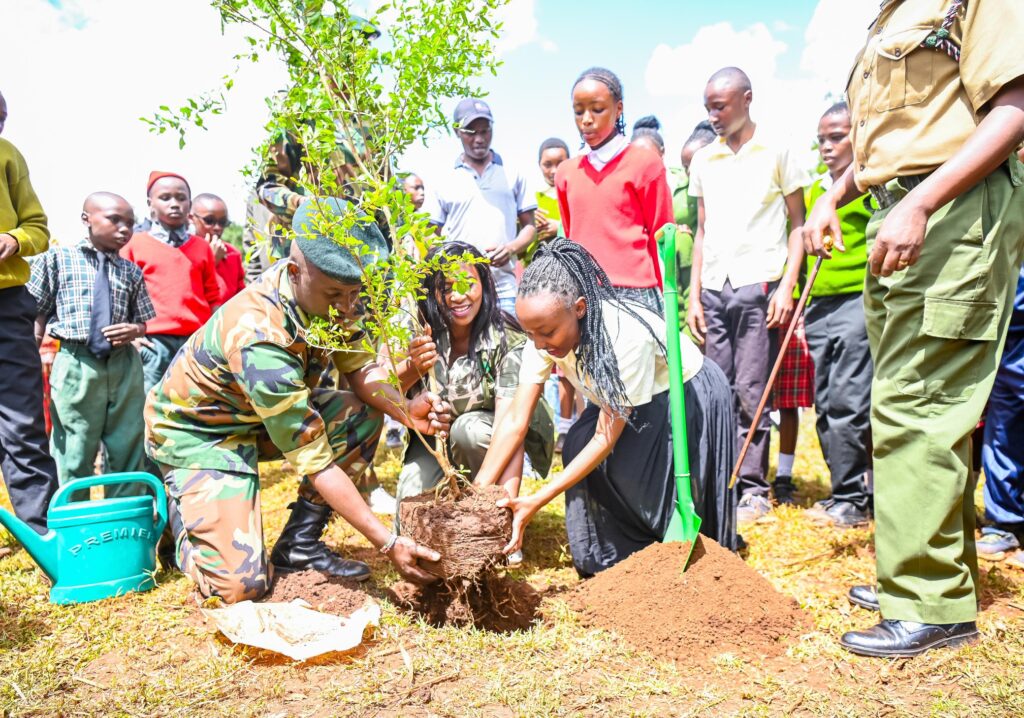
A step toward climate resilience
The Mazingira Day celebrations come at a time when Kenya is striving to reduce greenhouse gas emissions by 32% by 2030 through afforestation, renewable energy, and sustainable land management.
Kenya loses an estimated 50,000 hectares of forest cover annually to illegal logging, agriculture, and urban expansion. Ruto’s initiative, therefore, seeks to make conservation both an environmental necessity and an economic opportunity by blending reforestation with income-generating ventures such as fruit farming and seedling trade.
As the celebrations concluded, President Ruto led cabinet secretaries, NYS recruits, and students in planting the first seedlings at State House, Nairobi — marking the beginning of a renewed national push toward a greener, more resilient Kenya.
“Our future depends on how we nurture our environment today. Every seedling planted is a promise to future generations,” Ruto said.

